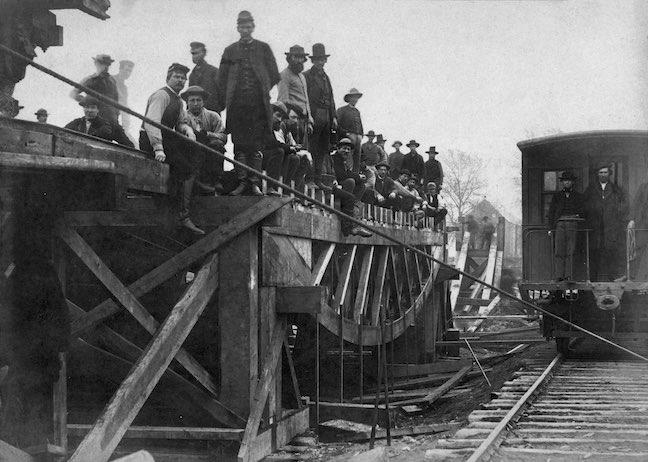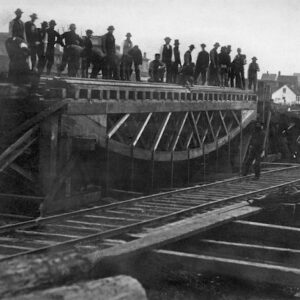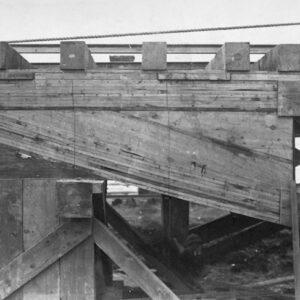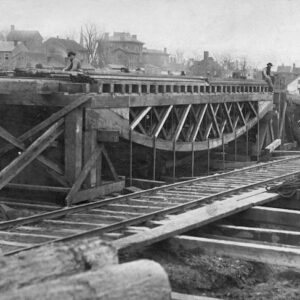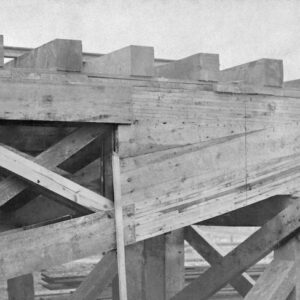| Credit: | by Russell (Andrew J.) |
|---|---|
| Date: | 1863.02-03 |
| Negative Size: | 6.5 in. x 8.5 in. |
| Equipment: | rope |
| Locations & Lines: | Alexandria VA; Orange & Alexandria Railroad (O&A); Virginia |
| Military Units: | US Military Railroads (USMRR); US Army |
| Transports: | passenger car |
| Sources: | J. Paul Getty Museum; Library of Congress |
$5.99
File Details: AABLm, 600 DPI, TIFF, Original Photograph, 16.6 Mb
Image ID: AABL
Haupt, United States Military Railway Department. Construction And Transportation. No. 36. Third Series of Experiments with Board Trusses. – The experiments of the first and second series having proved that trusses could be made of boards with sufficient strength to carry railway trains, it was concluded to construct 1,000 lineal feet of bridging of this description preparatory to the forward movement of the army of the Potomac.
The construction of these bridges furnished employment to the Construction Corps when they had no other work. It was intended that the trusses should be carried whole and placed in position, without the use of falseworks resting the ends on wooden piers when the trusses were shorter than the spans which they replaced.
Each pair of trusses was to form a span of 60 feet of bridging. The trusses were to be placed about 10 feet apart, braced by planks, and the ties placed directly on the top chords, as shown in the plate.
These trusses were composed of nine boards in each chord. The surfaces were not pitched. The half-inch bolts were in pairs one foot apart, as in the trusses previously constructed. Cut spikes, six inches long, were driven from both sides at intervals of four inches. Boards were also nailed vertically on the sides of the trusses covering the edges of the other boards.
A pair of these trusses was experimented upon and tested by first loading them uniformly with one ton per lineal foot, in addition to the weight of the bridge, and then running on a car loaded with 30 tons of rails. The strain thus produced was supposed to be twice as great as that caused by the passing of any ordinary railroad train.
The bridge stood the test without yielding or slipping of the boards in the middle of the span. Only one board appeared to have slipped about the sixteenth of an inch, but even this was doubtful.
Published in Millers The Photographic History Of The Civil War, Vol. 5, p281.
